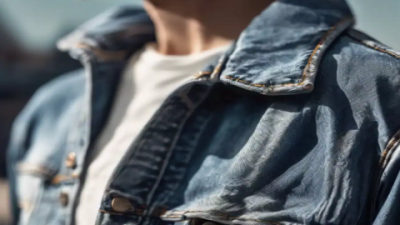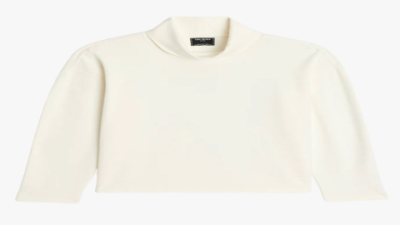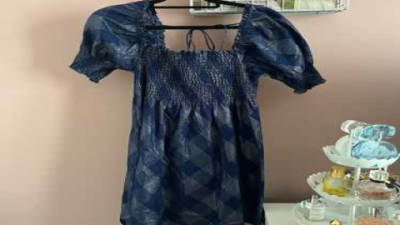People Always Say "It's Just Jewelry" – But That's Complete Nonsense
You walk into a room wearing those mass-produced hoops from fast fashion, and what happens? Nothing. Zero impact. Zero story. Zero soul.
But when you wear authentic native beaded hoop earrings? Everything changes.
A friend of mine – let's call her Sarah – thought she understood jewelry. She had drawers full of trendy pieces, spent hundreds on designer brands. Then she discovered native beaded hoop earrings at a cultural center, and her entire perspective shifted. "These aren't just accessories," she told me later. "They're like wearing a piece of history, a connection to something much bigger than myself."
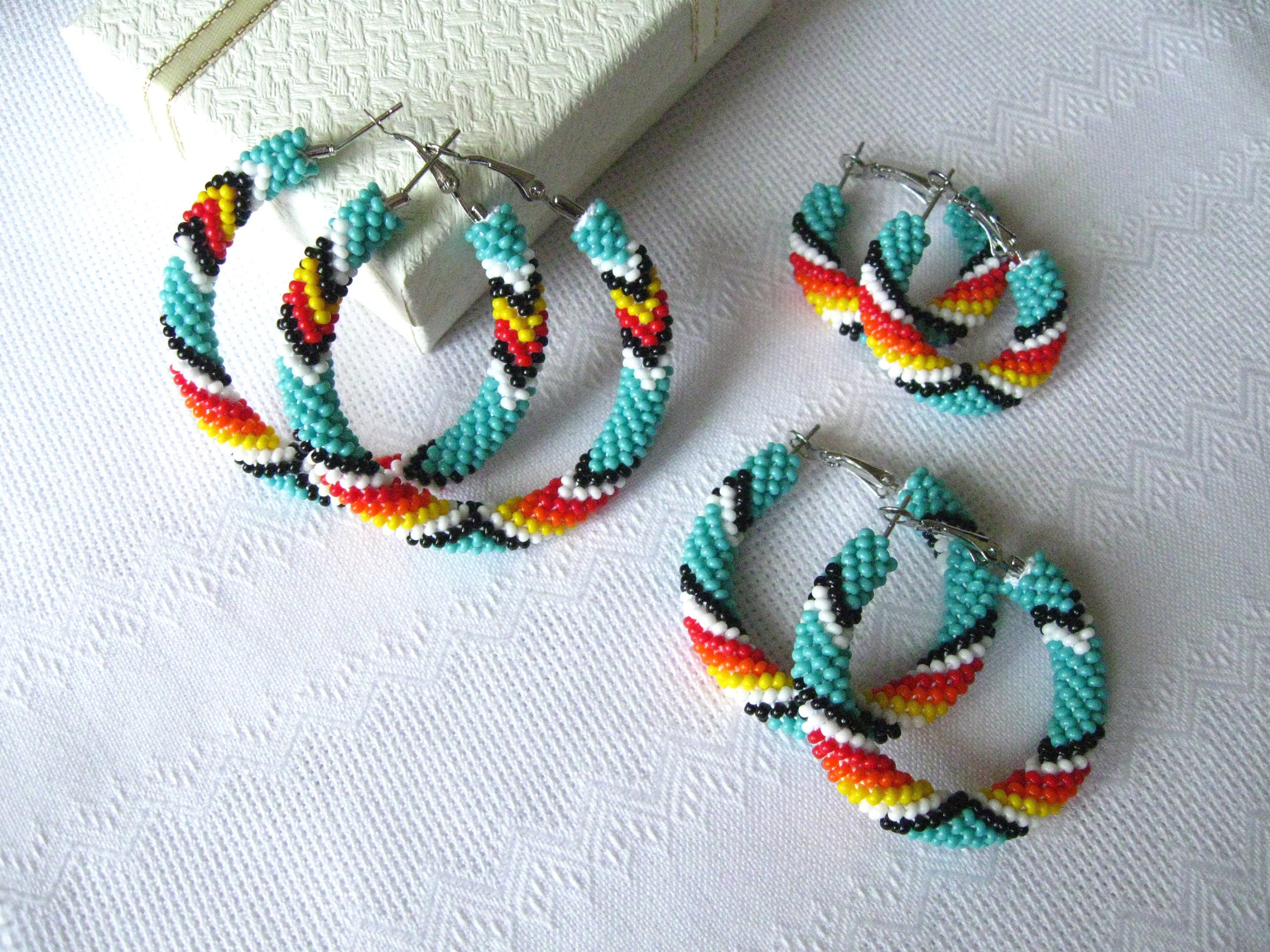
She was absolutely right.
The Sacred Circle That Changes Everything
Here's what most people don't understand: native beaded hoop earrings aren't fashion statements – they're spiritual symbols. When skilled artisans from tribes like the Eastern Shoshone, Navajo, and Zuni create these pieces, they're channeling thousands of years of cultural wisdom into every single bead.
The circular hoop represents the Medicine Wheel, also known as the Sacred Hoop. This isn't some marketing gimmick – it's a profound symbol representing:
- The Circle of Life: Birth, growth, death, and rebirth
- Interconnectedness: How all living things are connected
- Balance: Physical, emotional, mental, and spiritual harmony
- Infinity: The endless cycle of existence
When you wear these earrings, you're carrying these sacred teachings with you.
Not All Beaded Hoops Are Created Equal
Let me be brutally honest: the market is flooded with cheap imitations. But authentic native beaded hoop earrings have specific characteristics that set them apart:
Authentic Materials That Matter
| Component | Authentic Version | Mass-Produced Knockoff |
|---|---|---|
| Beads | High-quality seed beads, delica beads, turquoise | Cheap plastic or glass |
| Thread | Fireline, nymo thread, synthetic thread | Regular sewing thread |
| Findings | Sterling silver, stainless steel | Cheap metal that tarnishes |
| Construction | Hand-stitched peyote or ladder stitch | Machine-made or glued |
The difference isn't just aesthetic – it's spiritual, cultural, and artistic.
Tribal Variations You Need to Know
Each tribe brings their own techniques and meanings:
- Zuni Tribe: Known for intricate peyote stitch work and use of traditional turquoise colors
- Navajo Artists: Often incorporate silver elements and bold geometric patterns
- Hopi Craftsmanship: Features designs inspired by basket weaving and pottery patterns
- Santo Domingo: Masters of tiny heishe beading and mosaic work
The Real Stories Behind the Beads
Let me tell you about Maria, a Zuni artist I met at a trade show. She spends weeks on a single pair of earrings, not because she's slow, but because each bead placement is intentional. "My grandmother taught me that every bead carries a prayer," she explained. "When someone wears my earrings, they carry those prayers with them."
This is why authentic pieces cost more. You're not just buying jewelry – you're investing in:
- Generations of passed-down knowledge
- Hours of meticulous handwork
- Cultural preservation
- Direct support for indigenous artisans and their families
Another artisan, Robert Sellers from the Navajo Nation, creates 2.5-inch hoops that take him three days to complete. Each pair tells a story through color combinations and bead placement patterns that have been used for centuries.
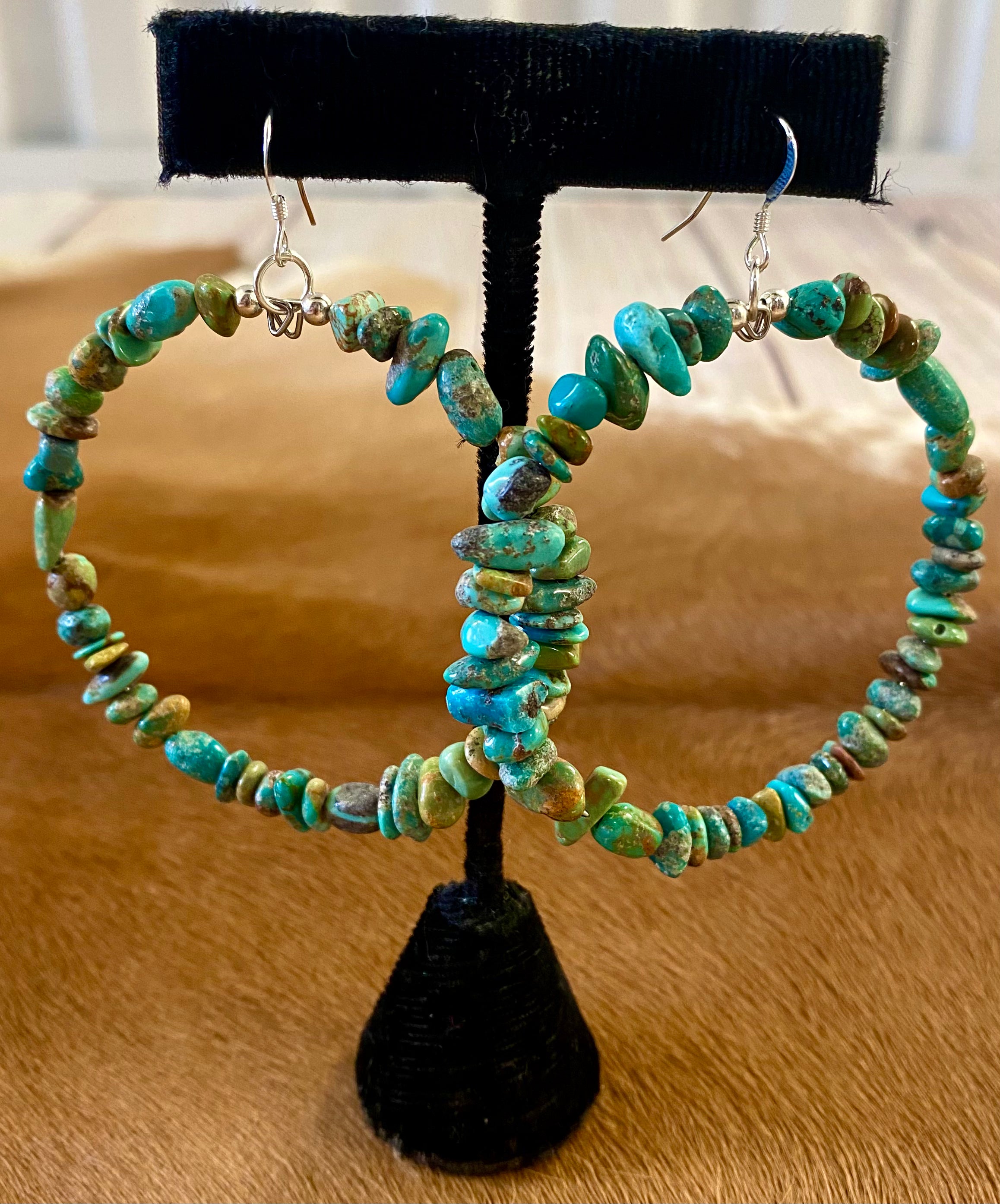
What Colors Actually Mean (This Will Surprise You)
Those color choices aren't random. Traditional native beadwork follows specific color symbolism:
- White: Purity, peace, and spiritual cleansing
- Turquoise: Protection, healing, and connection to sky and water
- Red: Strength, valor, and life force
- Black: Protection and the unknown
- Yellow: Enlightenment and the direction of the east
When you choose turquoise beaded hoops, you're not just picking a pretty color – you're embracing symbols of healing and protection that have guided Native American communities for generations.
The Construction Techniques That Matter
Authentic native beaded hoops use specific stitching methods:
Peyote Stitch
This ancient technique creates a tight, flexible beadwork that follows the curve of the hoop perfectly. The beads lock together in an offset pattern that's both beautiful and structurally sound.
Ladder Stitch
Often used for the base layer, this creates a foundation that can support additional decorative elements. The technique involves threading through the hoop and back through beads to create a secure attachment.
Fringe Elements
Many contemporary pieces add dangling elements using sequins, pearls, or additional beadwork. These aren't just decorative – they create movement and catch light, making the earrings come alive when worn.
How to Spot Authentic vs. Appropriation
This is where it gets tricky. The line between appreciation and appropriation is real, and you need to understand it.
Authentic pieces:
- Made by enrolled tribal members or indigenous artisans
- Sold through legitimate Native American retailers
- Come with information about the artist and tribe
- Priced appropriately for handmade work (usually $40-200+)
Red flags:
- Mass-produced in factories
- Extremely cheap pricing
- Vague "Native American style" descriptions
- No artist or tribal information provided
Care Instructions That Actually Work
Don't treat these like your drugstore earrings. Proper care preserves both beauty and cultural integrity:
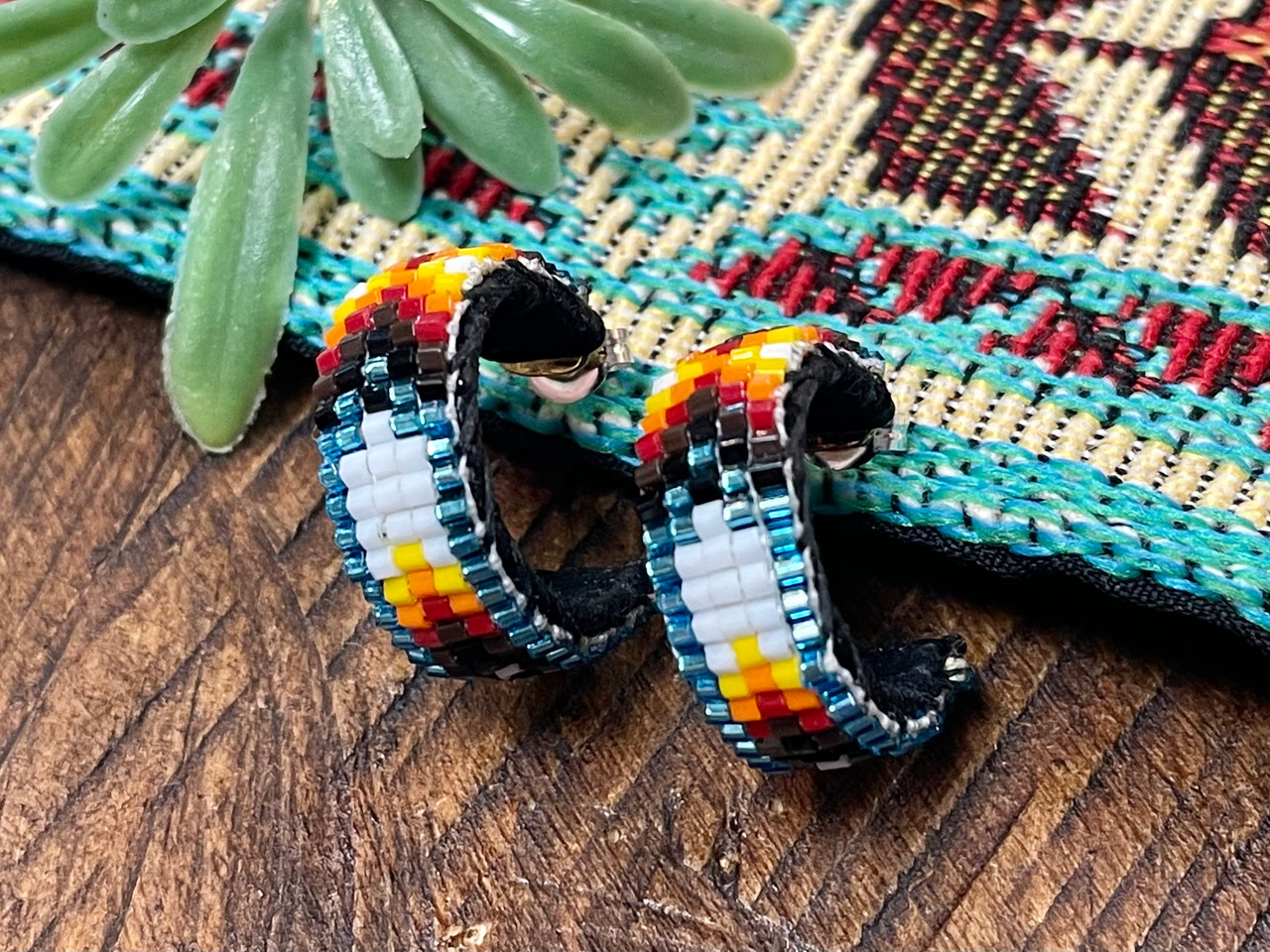
- Storage: Lay flat or hang to prevent bead distortion
- Cleaning: Gentle wipe with soft, dry cloth only
- Avoid: Water, chemicals, perfumes, and lotions
- Environment: Keep away from direct sunlight and humidity
The sterling silver components can be cleaned with natural ingredients like lemon juice or diluted vinegar, but keep these away from the beadwork.
Investment Value Beyond Beauty
Quality native beaded hoop earrings hold their value. Pieces by established artists often appreciate over time, especially as cultural awareness grows and authentic indigenous art becomes more sought after.
Consider this: a pair of Zuni beaded hoops from the 1980s recently sold for three times their original price. Meanwhile, those mass-produced "boho" hoops from last season? Worthless.
Real Case: The Medicine Wheel Connection
Take the story of Jennifer, a cancer survivor who discovered native beaded hoop earrings during her treatment. She chose white beaded Medicine Wheel earrings, drawn to their symbolism of healing and wholeness. "Wearing them during chemo gave me strength," she shared. "Every time I caught my reflection, I was reminded of the cycle of healing and renewal."
The earrings became part of her healing journey, connecting her to something larger than her illness. That's the power these pieces hold when they're authentic and worn with understanding.
Frequently Asked Questions
Q: How can I tell if native beaded hoop earrings are authentic?
A: Look for artist signatures, tribal certification, appropriate pricing ($40-200+), and purchase from reputable Native American retailers or directly from artists.
Q: Is it cultural appropriation to wear native beaded hoop earrings if I'm not Native American?
A: When purchased from authentic indigenous artisans and worn with respect and understanding of their cultural significance, it supports Native communities rather than appropriating their culture.
Q: How long do handmade native beaded hoop earrings last?
A: With proper care, authentic pieces can last decades. The quality materials and construction techniques ensure durability.
Q: What size should I choose for my first pair?
A: Start with 2-2. inch hoops – they make a statement without being overwhelming and work with most face shapes.
Q: Can I wear them every day?
A: Yes, but avoid exposure to water, chemicals, and excessive moisture. Remove before swimming, showering, or exercising.
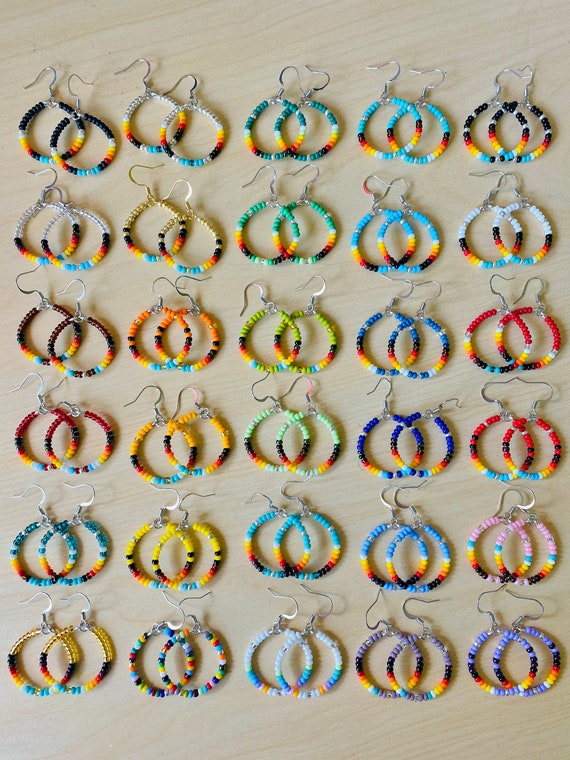
Q: Do different tribes have different styles?
A: Absolutely. Zuni artists excel at peyote stitch, Navajo artisans often incorporate silver, and Hopi designs reflect pottery and basket patterns.
Don't Settle for Fake Spirituality Anymore
Here's the truth: you can keep buying mass-produced jewelry that means nothing, tells no story, and supports no one. Or you can invest in authentic native beaded hoop earrings that connect you to thousands of years of wisdom, support indigenous artisans, and carry real spiritual significance.
The choice is yours. But once you experience the weight, beauty, and meaning of authentic pieces, those cheap imitations will feel like exactly what they are – empty circles with no soul.
When you choose authentic native beaded hoop earrings, you're not just accessorizing. You're participating in cultural preservation, supporting indigenous communities, and carrying sacred symbols that have guided people through life's cycles for millennia.
What stories do you want your earrings to tell about who you are and what you value?

